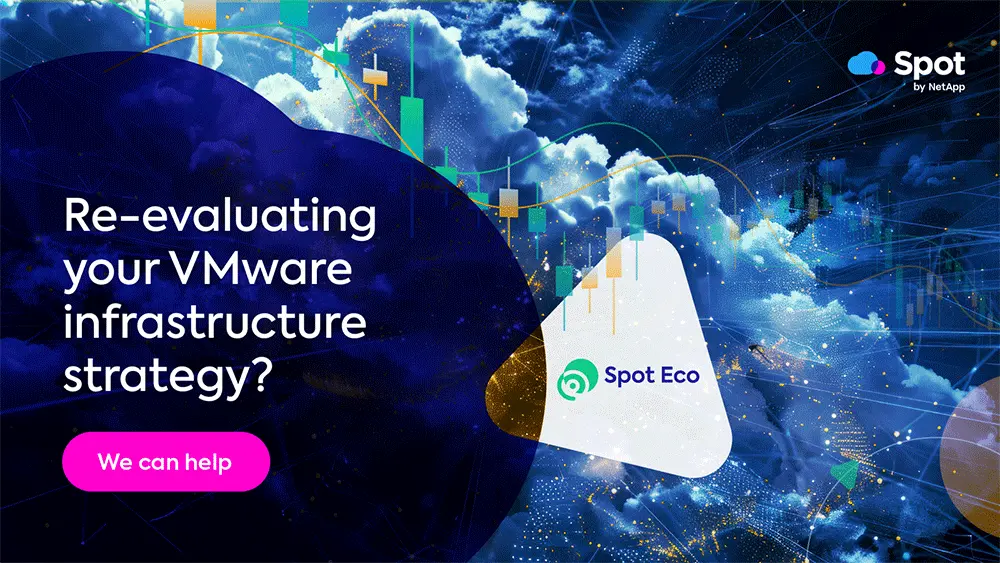
Since its acquisition of VMware, Broadcom has made significant changes to their licensing model, which have had an impact on many customers’ licensing costs. These changes have disrupted, and in some cases, completely upended VMware customers’ existing platform strategy, becoming a forcing function for them to carefully assess the potential risks to the business and the future impact they may have on their VMware infrastructure platforms. In fact, according to a recent report published by Gartner®, The CIO’s Guide to Broadcom’s Acquisition of VMware, “by 2028, approximately 30% of 2024 VMware customers will transition from on-premises services like VMware vSphere to alternative hypervisors or adopt container platforms, either on-premises or in the cloud.”
For customers choosing to continue their business with VMware but looking for a landing zone in the cloud, Azure offers a compelling solution.
Azure and VMware partner to become the perfect pair
Azure and VMware have partnered to offer several attractive incentives to encourage customers to migrate their VMware workloads to Azure VMware Solution (AVS), a Microsoft-managed service that allows users to run their VMware workloads on Microsoft Azure. These incentives include:
- Allowing existing vSphere or VMware Cloud on AWS (VMC) licenses to be traded in for AVS licenses
- Offering an additional 20% discount on Azure VMware Solution Reserved Instances until June 30, 2025, when you purchase a new 1-year Reserved Instance (AVS RIs).
- Offering new 5-year Azure VMware Solution Reserved Instances until June 30, 2025.
- Providing up to $240,000 in Azure credits for net new AVS customers buying new Reserved Instances (RIs) until June 30, 2025
But managing the financial commitments on these RIs is time consuming and complex. For customers without mature FinOps practices, this often leads to significant commitment waste or insufficient coverage, resulting in heavier usage of pricey on-demand resources for no good reason.
Managing your AVS commitments doesn’t have to be difficult
While running your business operations in the cloud comes with many benefits—top amongst them being increased performance, agility, and reliability—customers often struggle to effectively control their cloud costs.
One of the most effective ways to maximize savings, while maintaining flexibility, is to take advantage of cloud reserved commitments; however, reserved commitments are complex, and organizations often need help managing these investments.
For organizations making the move to AVS and needing help maximizing their AVS commitments, Spot Eco is the leading reserved commitment management solution. By combining automation, machine learning, and human oversight to continuously optimize your AVS commitment portfolio, Spot Eco removes the complexity of managing your AVS RI commitments (and 25+ other Azure commitment types) with fully managed commitment optimization.
Due to Eco’s advanced automation and ability to exchange RIs per Azure policy, you can be assured that your environment is always getting maximum coverage, enabling you to apply the deepest RI discounts to the vast majority of your nodes.
Lowering your total cost of ownership also means rightsized storage
Many customers run their VMware deployments on Azure using Azure NetApp Files (ANF) datastores to optimize their storage intensive VMware applications. ANF is a cost-effective, highly available, high performance, and fully managed file storage service from Microsoft Azure. It provides volumes as a service, for which you can create capacity pools and volumes. By using the same familiar protocols and tools that you rely on in your on-premises environment, you can also select service and performance levels, manage data protection, as well as create and manage high-performance, highly available, and scalable file shares. These capabilities allow you to scale storage independently from your compute, optimizing your total cost of ownership, while simplifying operations and reducing risk.
3 Ways to maximize savings with NetApp and Azure
If you’re looking to maximize your savings on your AVS infrastructure, look no further. Together, NetApp and Azure offer VMware customers three savings opportunities for both storage and compute.
Savings opportunity #1: Get continuous optimization on your AVS RIs and your ANF Reserved Capacity while you consider your long-term VMware strategy.
Spot Eco offers managed support for 25+ reservation types and services, 7 savings plan services as well as ANF reserved capacity on Azure, allowing for automated deep discounts across 29 different Azure services, including both Azure VMware Solution (AVS) reservations and Azure Virtual Machine (VM) reservations. And because Azure policy allows for a seamless cross-service transition between AVS reserved commitments and Virtual Machine reserved commitments, should you choose to refactor your workloads to cloud native, Eco will automatically see the drop in AVS usage and the rise in VM compute usage and exchange your reservations. This means that Eco will provide continuous optimization of your commitments while you refactor your workloads to be cloud native, while continuing to maximize commitment utilization across your compute environment.
Eco also manages the recently announced ANF reserved commitments, providing additional savings on your storage along with the savings on compute.
With Eco working on your behalf, you get the flexibility, cost optimization, and automated FinOps capabilities you’ll need while you and your teams consider the most optimal long-term VMware platform strategy for the business.
Savings opportunity #2: Take full advantage of the limited time savings Microsoft is offering on 1-year AVS Reserved Instances (RIs) or lock in AVS RI discounts for longer with the 5-year reservations.
Microsoft is offering a 20% discount on 1-year AVS RIs purchased before June 30, 2025, giving customers the same level of discount as 3-year RIs. Furthermore, when customers buy a new Reserved Instance for AVS, they can get an additional Azure credit of up to $240,000 until June 30, 2025. They can choose to use this credit to buy new RIs for AVS or consider using it for other Azure services to help them optimize and modernize in the cloud.
By managing your AVS RI commits, Spot Eco can help you maximize the limited time savings opportunity Microsoft is offering on AVS RIs. Furthermore, Eco’s human specialists will work with you on your long-term strategy to ensure that the optimal commitment portfolio is achieved.
Savings opportunity #3: Eco and ANF complement each other to deliver maximum savings on both compute AND storage.
All VMware nodes come with compute and storage built in. This means that if your workload is storage heavy but doesn’t require a lot of compute, you’ll still be required to use a large node for the storage, leaving much of the compute unused. By decoupling the storage from the compute, using ANF as your external datastore for your storage heavy environments allows you to use a smaller node that matches the storage you need without the compute you don’t. ANF provides compute savings by allowing rightsizing of the nodes, while Eco provides compute savings by increasing the RI coverage of the environment.
What does this mean for you?
By leveraging Eco and ANF in your AVS environments, you can get an additional ~25% savings above and beyond the 20-30% you can save on the compute with Eco alone. This can lead to 50%+ in total savings, which increases to upwards of 60%+ when purchasing discounted 1-year AVS RIs before June 30, 2025. And if that wasn’t enough, you’ll also automatically take advantage of the Azure credits that come with those RI purchases.
With NetApp and Azure, VMware customers truly get the best of both worlds
With Azure VMware Solution and Eco, you’ll get a fully managed VMware and commitment solution purpose built to support your long-term VMware infrastructure strategy across every stage of your migration journey. When adding ANF as external storage to your AVS deployment, both your compute and storage needs can be rightsized to eliminate waste, particularly compute waste for storage heavy workloads.
So, if you’re one of the many VMware customers apprehensive about the recent licensing changes and are now reevaluating how to run your VMware workloads, NetApp and Azure have collaborated to offer you a compelling cloud-based alternative to help you maximize your savings and reduce your total cost of ownership (TCO) on your VMware deployments.
With NetApp powering your VMware workloads on Azure, you really do get the best of both worlds—a fully managed solution VMware solution and the simplicity, savings, performance, and security you’ve come to expect from NetApp and Microsoft Azure.
Estimate your total savings using the Total Cost of Ownership calculator.
Ready to learn more about Spot Eco? Request a demo today!

